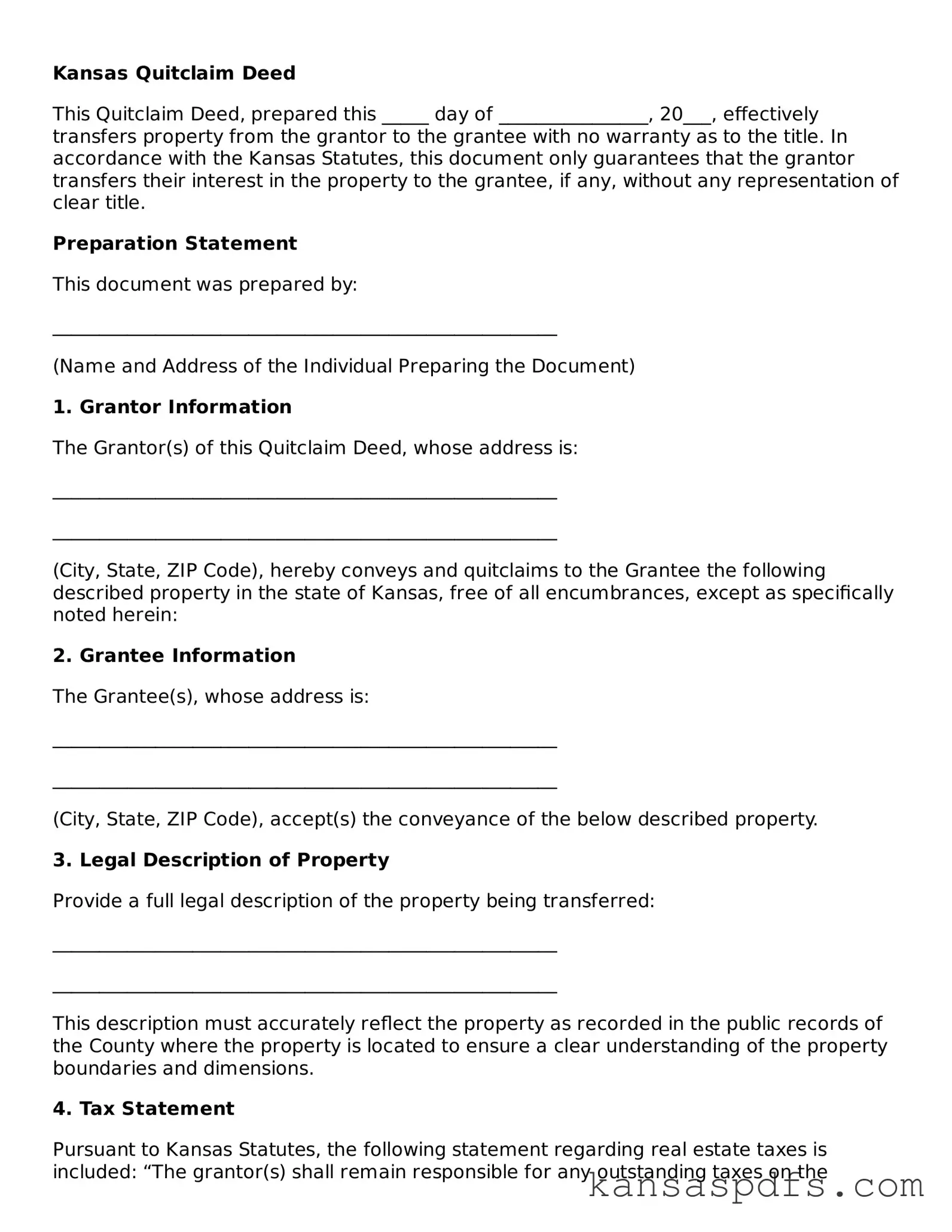Kansas Quitclaim Deed
This Quitclaim Deed, prepared this _____ day of ________________, 20___, effectively transfers property from the grantor to the grantee with no warranty as to the title. In accordance with the Kansas Statutes, this document only guarantees that the grantor transfers their interest in the property to the grantee, if any, without any representation of clear title.
Preparation Statement
This document was prepared by:
______________________________________________________
(Name and Address of the Individual Preparing the Document)
1. Grantor Information
The Grantor(s) of this Quitclaim Deed, whose address is:
______________________________________________________
______________________________________________________
(City, State, ZIP Code), hereby conveys and quitclaims to the Grantee the following described property in the state of Kansas, free of all encumbrances, except as specifically noted herein:
2. Grantee Information
The Grantee(s), whose address is:
______________________________________________________
______________________________________________________
(City, State, ZIP Code), accept(s) the conveyance of the below described property.
3. Legal Description of Property
Provide a full legal description of the property being transferred:
______________________________________________________
______________________________________________________
This description must accurately reflect the property as recorded in the public records of the County where the property is located to ensure a clear understanding of the property boundaries and dimensions.
4. Tax Statement
Pursuant to Kansas Statutes, the following statement regarding real estate taxes is included: “The grantor(s) shall remain responsible for any outstanding taxes on the property up to and including the year of this deed's execution.”
5. Signatures and Notarization
In witness whereof, the Grantor(s) has/have executed this Quitclaim Deed on the date first above written.
Grantor's Signature: __________________________________
Print Name: _________________________________________
State of Kansas
County of __________________
This document was acknowledged before me on __________________ by _____________________________________________.
(Signature of Notary Public)
(Notary Public for the State of Kansas)
My Commission Expires: __________________
Recording
After completion and notarization, this Quitclaim Deed must be filed with the Recorder's Office in the Kansas County where the property is located. The address of the recording office is as follows:
______________________________________________________
(Address of the County Recorder's Office)
Ensure to verify any specific recording fees and requirements directly with the County Recorder to facilitate a smooth transaction and proper recording of the document.
